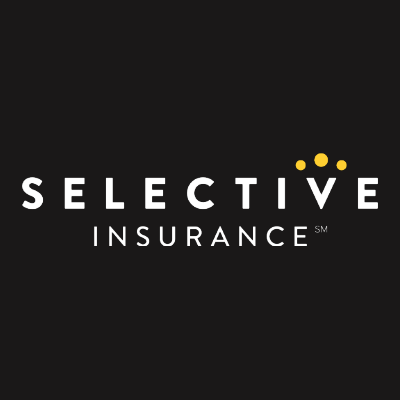Selective Insurance Group Profile
Selective Insurance Group, Inc. operates as a property and casualty insurance company.
The company, through its subsidiaries, offers standard commercial, standard personal, and excess and surplus (‘E&S’) lines property and casualty insurance products.
The company owns ten property and casualty insurance subsidiaries (‘Insurance Subsidiaries’). The Insurance Subsidiaries sell products and services only in the United States (‘U.S.’) and exclusively through independent insurance agents and wholesale brokers. Various state departments of insurance license nine of the company’s subsidiaries as admitted carriers to write specific lines of property and casualty insurance in the standard marketplace; and authorize the tenth subsidiary as a non-admitted carrier to write property and casualty insurance in the excess and surplus (‘E&S’) lines market.
Segments
The company has the following four reportable segments:
Standard Commercial Lines: This segment sells the company’s Standard Commercial Lines property and casualty insurance products and services to commercial enterprises, typically businesses, non-profit organizations, and local government agencies, primarily in 30 states and the District of Columbia.
Standard Personal Lines: This segment sells the company’s Standard Personal Lines property and casualty insurance products and services primarily to individuals in 15 states. Standard Personal Lines includes flood insurance coverage sold in all 50 states and the District of Columbia through the Write Your Own (‘WYO’) program of the National Flood Insurance Program (‘NFIP’).
E&S Lines: This segment sells the company’s E&S Lines property and casualty insurance products and services in all 50 states and the District of Columbia. The company sells its E&S Lines property and casualty insurance products and services to commercial customers unable to obtain coverage in the standard marketplace, generally because of unusual or high-risk exposures. E&S insurers are exempt from many standard market requirements, including form and rate regulation. E&S carriers may write an insurance policy if three separate standard line carriers have declined to write the risk to be insured.
Investments: This segment invests the premiums the company’s Insurance Subsidiaries collect and amounts generated through the company’s capital management strategies, including debt and equity securities issuance.
Insurance Operations
The company generates its insurance operations' revenue by selling insurance policies and services in return for insurance premiums. One-year term policies constitute the vast majority of the company’s sales. The company regularly analyzes its overall reserve position through internal and external actuarial reserve reviews.
To protect the company’s capital resources and manage the risks associated with its insured risks, the company purchases reinsurance from and enters into other risk transfer agreements with third parties. The company’s insurance subsidiaries transfer risks and share premiums and losses based on percentages specified in an internal reinsurance pooling agreement.
Products and Services
The company’s Insurance Subsidiaries sell insurance that falls into two broad categories:
Casualty insurance, which generally covers the financial consequences of injuries employees suffer in the course of employment; third-party bodily injury and/or property damage from an insured's negligent acts, omissions, or legal liabilities; and the company’s obligation to defend its insured(s) for covered claims. Casualty claims are long-tailed, regularly taking several years to be reported and settled – and even longer in certain situations.
Property insurance, which generally covers accidental loss to an insured's real property, personal property, and/or property loss-related earnings. Property claims are usually reported and settled in a relatively short period after the date of loss.
Customers and Customer Markets
The company categorizes its Standard Commercial Lines customers into the following strategic business units (‘SBUs’):
Contractors: General contractors and trade contractors.
Mercantile and Services: Retail, office, lessors risk/property owners, automobile services, and golf courses.
Community and Public Services: Public entities, social services, religious institutions, and schools.
Manufacturing and Wholesale: Manufacturers, wholesalers, and distributors.
Bonds: Fidelity and surety.
Geographic Markets
The company sells its insurance products and services in the following geographic markets:
Standard Commercial Lines products and services primarily in 30 states in the contiguous U.S. and the District of Columbia.
Standard Personal Lines products and services primarily in 15 states in the Eastern, Midwestern, and Southwestern regions of the U.S. Flood insurance, reported in this segment, is sold in all 50 states and the District of Columbia.
E&S Lines products and services in all 50 states and the District of Columbia.
In 2022, the company began writing Standard Commercial Lines business in Vermont, Alabama, and Idaho. This expansion permits the company to compete more effectively against national insurers and diversify the company’s portfolio risk. The company expects to write new business in West Virginia and Maine in early 2024, and Washington, Oregon, and Nevada in late 2024. Over time, the company plans to expand its Standard Commercial Lines footprint into most of the contiguous U.S.
Distribution Channels
The property and casualty insurance market has three main distribution methods: sales through appointed independent insurance agents and wholesale brokers; direct sales to personal and commercial customers, including Internet-based digital platforms; and sales through captive insurance agents employed by or contracted to sell exclusively for one insurer.
By segment, the company uses the following types of independent distribution partners to sell the company’s insurance products and services:
Standard Commercial Lines: Independent retail agents;
Standard Personal Lines: Independent retail agents; and
E&S Lines: Wholesale general agents.
In 2023, the company’s top 20 distribution partners generated approximately 42% of the company’s DPW, excluding E&S Lines and the flood line of business.
Independent Retail Agents and Standard Lines
The company expects that independent retail insurance agents – representing most of the company’s independent distribution partners – will remain a significant force in overall insurance industry premium production.
Approximately 1,550 distribution partners sell the company’s standard lines products and services through approximately office locations. About 850 of these distribution partners sell the company’s Standard Personal Lines products. Approximately 6,400 distribution partners sell the company’s flood insurance products.
Wholesale General Agents and E&S Lines
The company has approximately 90 wholesale general agents, with office locations, selling the company’s E&S Lines business.
Investments segment
The company maintains a well-diversified portfolio across issuers, sectors, and asset classes; and a high credit quality fixed income securities portfolio with a duration and maturity profile at an acceptable risk level that provides ample liquidity. The company’s fixed income securities primarily include corporate, asset-backed and mortgage-backed securities; and state and local municipal obligations. The company also invests in public equity securities, commercial mortgage loans, short-term investments, alternative investments, and other investments. Alternative investments primarily include limited partnership investments in private equity, private credit, and real estate strategies. Other investments include Federal Home Loan Bank (‘FHLB’) stock and tax credit investments.
Regulation
The company’s various state insurance regulators are members of the National Association of Insurance Commissioners (‘NAIC’), which has established statutory accounting principles (‘SAP’) and other accounting reporting formats and model insurance laws and regulations governing insurance companies.
While primarily regulated at the state level, the company’s business is subject to federal laws and regulations, including:
The McCarran-Ferguson Act;
The Terrorism Risk Insurance Program Reauthorization Act (‘TRIPRA’);
The NFIP, overseen by the Mitigation Division of the Federal Emergency Management Agency (‘FEMA’);
The Medicare, Medicaid, and SCHIP Extension Act of 2007, which subjects the company’s workers compensation business to Mandatory Medicare Secondary Payer Reporting;
The economic and trade sanctions of the Office of Foreign Assets Control (‘OFAC’);
Various privacy laws related to possessing personal non-public information, including the following: Gramm-Leach-Bliley Act; Fair Credit Reporting Act; Drivers Privacy Protection Act; and Health Insurance Portability and Accountability Act.
The Sarbanes-Oxley Act and the Dodd-Frank Wall Street Reform and Consumer Protection Act (‘Dodd-Frank Act’) govern publicly-traded companies. These laws require or permit national stock exchanges or associations, such as the Nasdaq Stock Market LLC, where the company lists its equity securities, to mandate certain governance practices.
The Dodd-Frank Act, enacted in 2010 in response to the 2008 and 2009 financial markets crises, provided for some public company corporate governance reforms and some oversight of the business of insurance, including establishing the Federal Insurance Office (‘FIO’) under the U.S. Department of the Treasury; and granting the Federal Reserve oversight of financial services firms designated as systemically important.
The FIO, consistent with its authority under the Dodd-Frank Act negotiated a covered agreement with the European Union that, among other things, impacted reinsurance collateral requirements for foreign reinsurers; and has been gathering insurance market data.
History
Selective Insurance Group, Inc. was founded in 1926. The company was incorporated in New Jersey in 1977.



